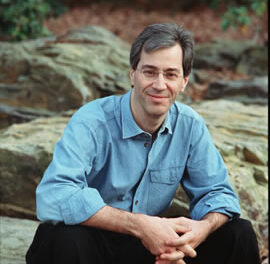This past Saturday, the NC Museum of History presented an insightful program as part of its 21st Annual African American Cultural Celebration. This informative event comprised of four panelists provided great exposure to various artists who extend themselves by uncovering the truth of cultural studies. This event was well structured and, minus a few technical errors, ran smoothly in its virtual debut.
For over 20 years thus far, the NC Museum of History has missioned to celebrate and bring together African American community members. Members include organizations, authors, artists, musicians, filmmakers, scholars, and more. This platform highlights the contributions that African Americans, past and present, have made to North Carolina’s history and culture. This celebration reached numbers amounting to over 20,000 participants across the state, as well as viewers both nationally and internationally.
Indicating the statewide kickoff to Black History Month, AACC packed so much information into just four hours that I didn’t know where to start! I opted to attend the “Literature and Spoken Word” series, which was quite insightful – and aligned with my professional goals, might I add. Other panels included exposure to artists in the fields of “Arts and Crafts Traditions,” “Education and Heritage,” “Food Health and Beauty,” “History, Film, and Enterprise,” and “Music, Movement, and Drama.”
I tuned into the session with Chrystal D. Giles, author of the middle-grade children’s book Take Back the Block. To start, Giles introduced herself and shared her origin story as a published author. As a lover of books, she mentioned that, in response to becoming a new mom, she began searching far and wide to employ narratives for her child’s library. To her disappointment, she found few novels that included stories of Black communities as she experienced and knew them. Compelled to take initiative, Giles authored a children’s book herself, which caters to unveiling the truth of the community as it relates to gentrification and public erasure through city project plans. Her resulting novel, Take Back the Block, is available for children ages 8-12. Still, she assures that anyone with a third-grade reading level and a capacity to understand the depth of the importance of sustaining cultural history through community infrastructure can experience the benefits of its education, especially from the perspective of Wes, who she included as her favorite character. Giles shared some information about gentrification and ways to acknowledge the changes it demands of communities whose livelihood surrounds preserving such communities. You can learn more about Giles’ experiences as a children’s author or purchase her novel through her website.
DeWayne Barton, spoken word artist and founder of Hood Huggers International, shared his experiences, reminding the viewing community that you don’t have to be the best or most experienced to induce change. He suggested that all that is required is the desire, drive, and passion for changing the narrative and creating the future you envision for yourself and your community. Based in Asheville, Barton’s initiative, Hood Huggers, highlights the importance of changing the narrative and using the resources you have to execute a vision. With a journey beginning as an artist who curated pieces using trash or otherwise neglected items found within his community, Barton saw an entryway for peaceful consignment. By implementing the vision of his artistry and infusing it with the inspiration of the resources he found while embarking on extending progressive narratives within his community, he created Hood Huggers. Servicing tours through the city of Asheville, Hood Huggers disperses knowledge that been cultivated over time. A legacy is manifested in each individual that expresses interest and becomes a part of driving the organization’s objectives to “get down,” as he so wisely phrases the incentives of those interested. To learn more or schedule a tour, visit Hood Huggers’ website.
Ann Miller Woodford, a visual artist, author, and oral historian, shared vital information about tracing ancestry and exploring your lineage’s cultural heritage. When All God’s Children Get Together: A Celebration of the Lives and Music of African American People in Far Western North Carolina, the title of Woodford’s book, encompasses the research to which she has devoted her life. As a result of her father’s compelling nature to tell stories about his past and of those before him, Woodford has preserved this oral tradition through her talents in storytelling, conveying history, and engaging others through her visual art. As she explains it, Woodford’s “research encyclopedia” can be found on Amazon here or otherwise sourced at her website, which houses her visual art for commission and collection series.
May work that surrounds this narrative of positive exposure and education flow abundantly though this organization for many more years to come! Thank you to the NC Museum of History and other organizers for supporting the initiative to promote awareness of African American leaders in the community. It was a joyous experience to observe and receive the wisdom of such knowledgeable and intellectually astute individuals.












